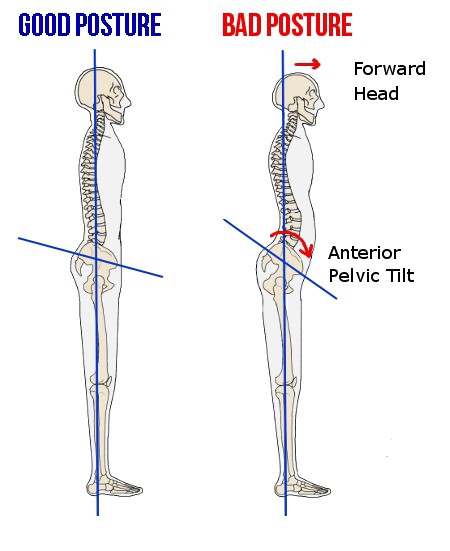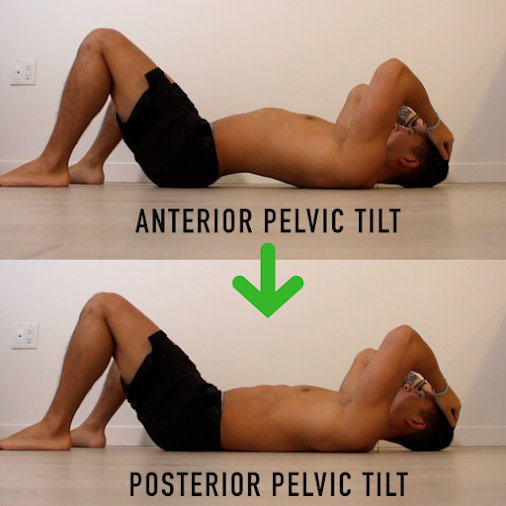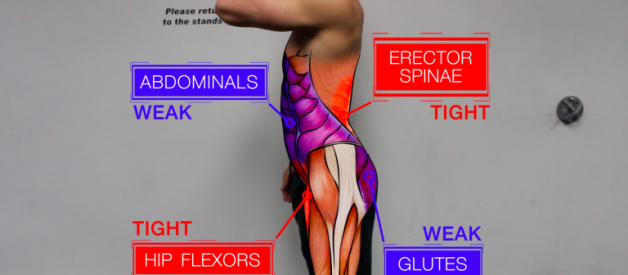 About 7 degree angle of APT is normal
About 7 degree angle of APT is normal
Hi there! I?m writing this article since it was asked by some friends on jefit.com. But hope it can help other people too.
I?m not a specialist on the subject, just someone who spent an amount of time researching and created a workout routine to fix my APT problem.
Please, read the whole article to see if this routine can be proper to you and keep in mind maybe it can be similar to a completely different issue and so you can be making things worse.
To summarize, to fix APT we need to stretch back and quads, and strengthen abs, hamstrings and glutes.

So the solution to fix APT starts here:
Strengthen glutes and hamstrings
Add exercises to your regular workout routine, like hip thrusts and leg curls. One/single leg squats (also called Bulgarian split squats) is my favorite to work both glutes and hams.
If you don?t go to a gym neither have equipment to workout at home, you still can get intense workouts with body-weight exercises.
As there are a broad rage of exercises for glutes and hamstrings and you can choose them according to your reality and preference, it goes beyond the scope of this article.
But avoid exercises that require the lower back!
With anterior pelvic tilt, your lower back is constantly firing throughout the day with no time to recover. It?s overworked and tight, and doing deadlifts is the equivalent to overtraining and will hurt you in the long run. So it?s better to take a break till you fix it.
Now let?s go the the routines adjusted to fix APT you have to do along with:
I divided in two routines: APT and Core
APT: once a week; 9 stretches; session: 14:30; actual work: 12:40Core: twice a week; 10 exercises; session: 14:05; actual work: 11:00Always done at the end of leg workouts and APT stretching being the last one.
I prefer to do these specific routines based on time, so I used an interval timer app (Android) called Interval Timer 4 HIIT Training. But it looks like not available for download anymore for a while. However, another really good app I suggest is Seconds (iOS and Android) or as of 2020, I?m currently using Tabata Timer (Android) from Eugene Sharafan, which is the most complete and customizable I found. All of them have support to text-to-speech which is more convenient.
These are the APT (left) and Core (right) routines and which I list one by one with videos further:
 Interval Timer 4 HIIT Training app
Interval Timer 4 HIIT Training app
What equipment will you need to perform the stretches/exercises? A mat, a Swiss/stability/exercise ball, and a bench.
This is the stretch routine done once a week:
Don?t need to do all the 9 stretches, some suggest even small routines like with 3, but as it is done only once a week, I wanted to work it really well.
- 90/90 Wall Breathing
2. 90/90 Hip Flexor Stretch3. 90/90 Leaned Hip Flexor Stretch6. PNF Kneeling Lat Stretch (item 6 because this is the exercise number 6, but it is in this order because it is on the same video below as the items 2 and 3)
4. Stability Ball Side to Side Mobility Exercise
5. Pelvic Rolls
7. Stability Ball Back Extension With Knees Off Ground
8. Stability Ball Back Stretch
The first stretch only
9. Stability Ball Seated Back Stretch
This is the core routine I do twice a week:
- Crunches with Hip Flexor Deactivators
2. Hollow Body Hold Progression
3. Plank with Hyper-Corrected Pelvis
Link fixed to a new video of the same exercise
4. Side Plank
5. Dead Bug
6. Hip Raise
7. Alternating Heel Touch
8. Bench Reverse Crunches
9. Ball Crunches
10. Russian Twists
How to self test if you still have APT
Based on a comment from Scott Noll on YouTube:
?Another test ? easier but less precise: just lay on your back on a flat surface, feet on the floor, knees bent at about a 45 degree angle (like you were about to do a sit up). If your low back is in contact with the floor, your pelvic tilt is normal. If your low back is lifted up off of the floor, you have anterior pelvic tilt. Then what you can do is try lifting your knees toward your chest. If your low back flattens out, then it means you most likely have tight hip flexor and weak abs + glutes. If it DOESN?T flatten out, you have a more serious problem with the arrangement of your lumbar vertebrae.?
More about it on a video below.
 ATTENTION: This picture is showing an exercise (which a similar one is on the routine, called pelvic rolls). It is calling as posterior pelvic tilt the action of flatten your lower back into the ground by squeezing your glutes and tilting your pelvis to help to fix APT by doing some reps of this. It doesn?t mean you have posterior pelvic tilt if your back is flat to the ground. If you can get your lower back flat without any effort, you probably don?t have anterior pelvic tilt neither.
ATTENTION: This picture is showing an exercise (which a similar one is on the routine, called pelvic rolls). It is calling as posterior pelvic tilt the action of flatten your lower back into the ground by squeezing your glutes and tilting your pelvis to help to fix APT by doing some reps of this. It doesn?t mean you have posterior pelvic tilt if your back is flat to the ground. If you can get your lower back flat without any effort, you probably don?t have anterior pelvic tilt neither.
I did the above described test before I started this routine and I could put my hand between my lower back and the floor. Now my back is flat to the floor.
The above video was not out yet when I started, so do the tests on the video to know if you really have hip flexors tightness. If not, don?t do the two hip flexor stretches I used on the routine. I haven?t done such tests before, but I did it after the APT was fixed and could see I don?t need to stretch my hip flexors anymore.
How long will it take to fix APT? I don?t know, I haven?t really worried about it. I just incorporated this routine as a habit and when I tested it again I saw it was fixed. But it was done after a really good time. If you do more days, you can get faster results, though.
I think as most of us sit for the most part of the day (at transport, work and home), it?s still good to do the stretches but less often to keep the good posture. But be careful to not develop posterior pelvic tilt.
Hope it helps you and would appreciate you sharing your experience,Good luck!
Ronald Leite


